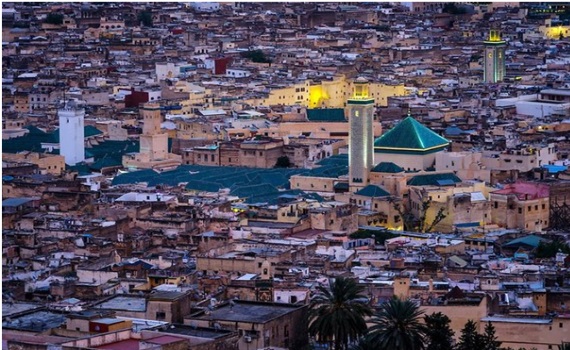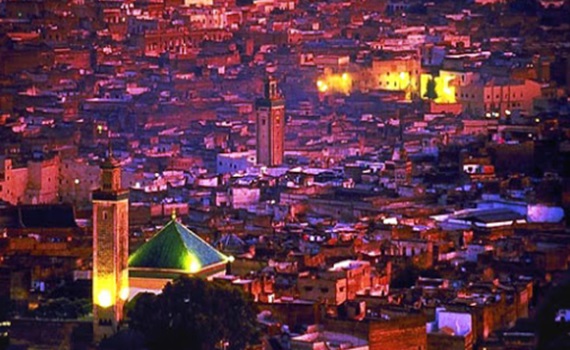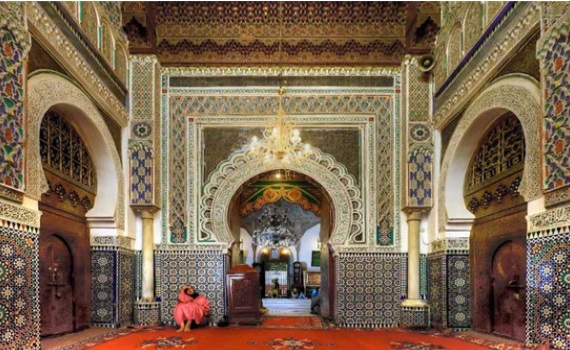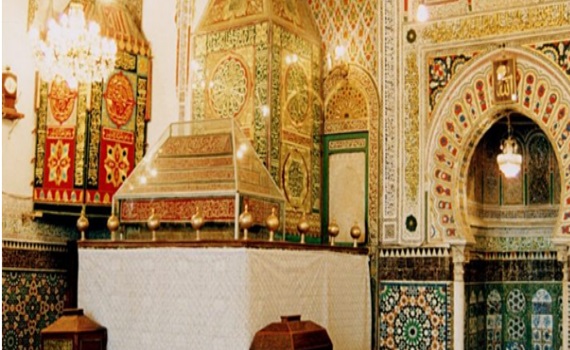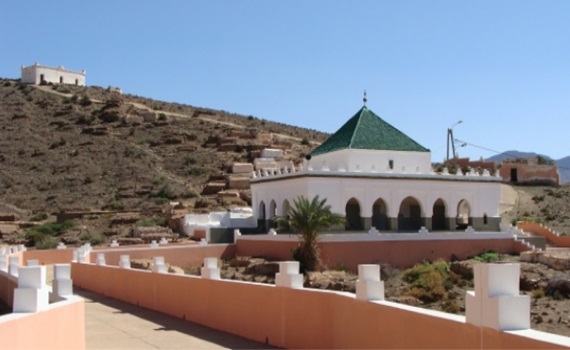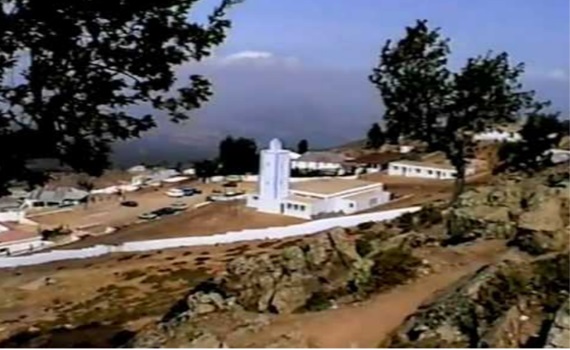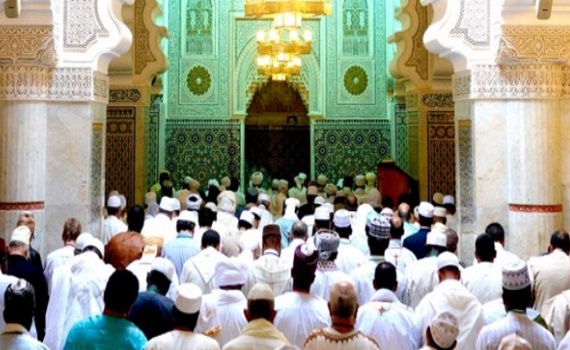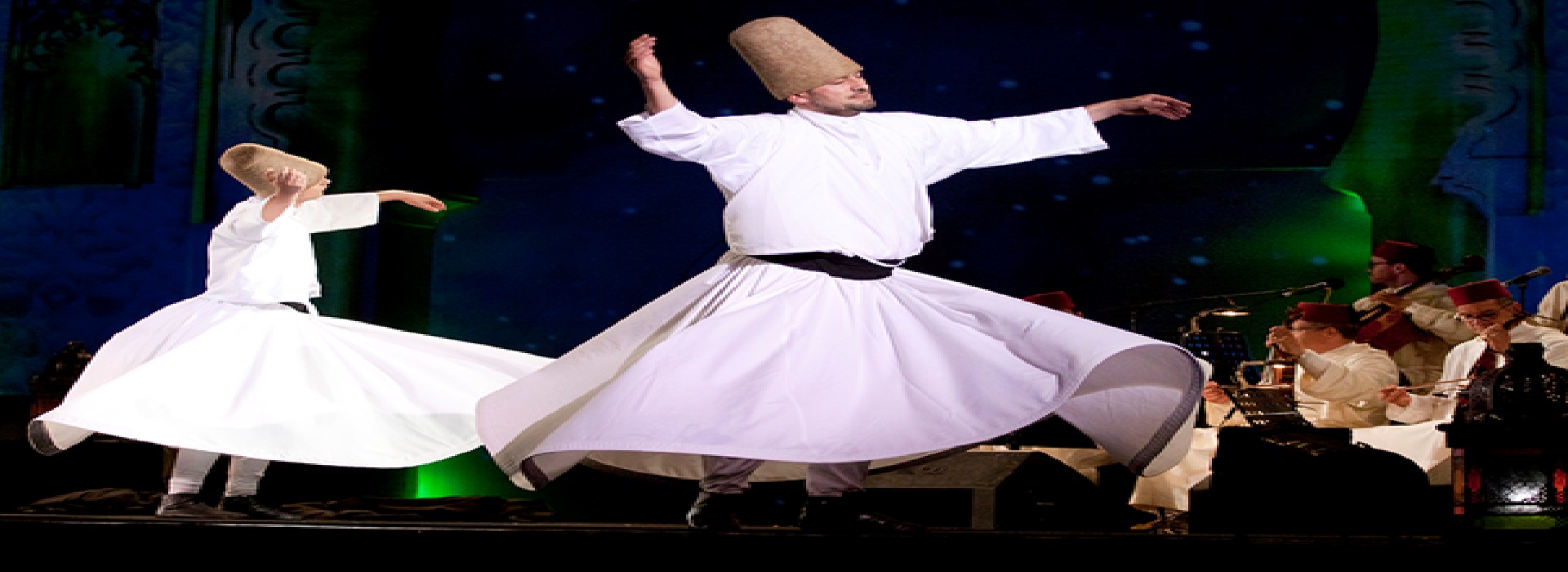
Nowadays, the need for meaning and spiritual renewal is becoming more and more trendy. A spiritual experience allows you to disconnect from your daily life to meet yourself and give sense to your life.
Morocco is a rich place of exchange, where modernity, sacred values, faith, culture, nature, and heritage harmonize perfectly.
The kingdom is also known for its long religious and spiritual tolerance tradition, as can be seen from the harmony of the coexistence of mosques, churches, and synagogues throughout Moroccan territory. Drawing on this millennial culture, Morocco continues to promote interreligious dialogue, An open and singing dialogue, where peace reigns and conflicts are forgotten in the sense of an excellent cultural and spiritual conviviality, which can only enrich our humanity by giving it meaning and depth.
The Fez Festival of Sacred World Music, recognized by the UN as "a milestone contributing to the dialogue of civilizations," embodies, like its medina, the millennial traditions, and the values of tolerance and spirituality.
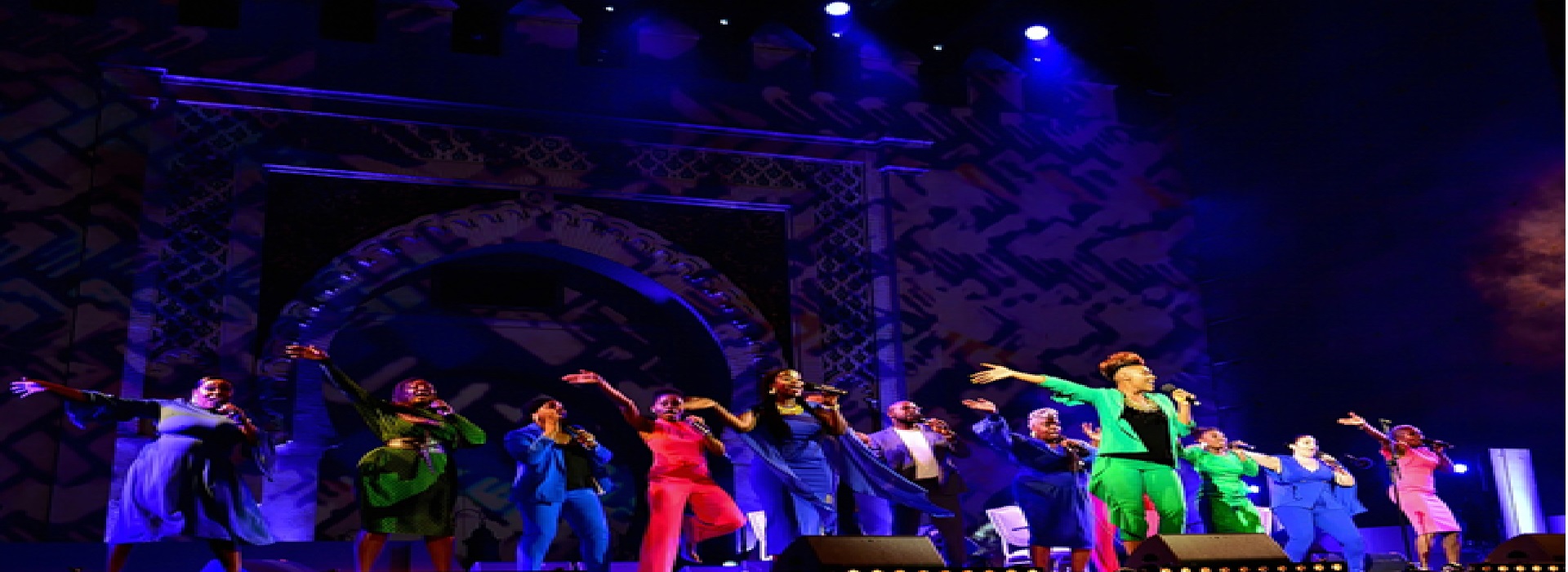
Fez, the soul of Morocco
The city of Fez is rightly considered the cultural and spiritual capital of Morocco. It is even the heart of the kingdom, its soul, itsspiritual breath. It is also the consciousness, the history, the living memory. Discovering the soul of Fez means discovering its personality, its uniqueness, which distinguishes it from other competing traditional cities.
The many facets of Fez
The city of Fez was founded in 789 at the strategic heart of the crossroads of trade routes and rich and abundant natural resources. The successive waves of immigration have brought it, from its origins, a great cultural diversity. As a result, Fez has been able to develop over the centuries a remarkable capacity to integrate communities as different as they are varied, especially at the level of religious obedience. Observed from this perspective, Fez manifests itself as a space where a cultural mix has taken place and has given it this beauty, as specific as it is intimate, which has undoubtedly made it one of the world's great metropolises, this of which we can only be proud.
Orientalist Roger le Tourneau describes the inhabitants of Fez as a complex mixture: "The Arab brought his nobility, the Andalusian his refinement, the Karouan his dexterity, the Jew his cunning, the Berber his tenacity."
Over the course of its history, no less than three cities, temporally distinct, have united and evolved to form the city of Fez as we know it today..
Outstanding Universal Value
The medina of Fez el-Bali is undoubtedly one of the largest medievaltype cities in the world. It not only represents an exceptional architectural, archaeological, and urban heritage, but it also conveys a way of life, know-how, and a culture that persists and is renewed despite the various effects of changes in modern societies. It is a unique city, a universally appreciated gem.
Fez is a city-museum
Classified since 1980 by UNESCO as a World Heritage Site, Fez is a living museum of art and culture, where several creative activities harmoniously coexist, representative of Moroccan craftsmanship in all its splendor.
The Medina of Fez in a few figures
280 hectares in area, 12 gates, 9,500 alleys, 9,369 houses of architectural interest, 9,600 artisan workshops, 250 religious buildings including 143 mosques and 11 medersas, 300fondouks (caravanserai), 3,500 wells in the Medina, and… 0 cars; the Medina is the largest pedestrian zone in the world in front of Venice.
The Medina of Fez is a living testimony to a flourishing city having exerted a considerable influence mainly from the 12th to the 15th century, on the development of architecture, monumental arts, and urban planning, especially in North Africa, in Andalusia and subSaharan Africa...
Fez, an inhabited sanctuary
Fez does not open up easily. To access it, you have to enter through the sacred's main door, both visible and veiled. Because Fez is a sanctuary, the Sufis, those initiates of Islam, have always called it: the Zaouia. The traveler who came from afar knew that when he arrived at the city's gates, it was from its founder and his patron saint himself that he asked for hospitality. For him, Fez is the city of MoulayIdriss.
Today the city of MoulayIdriss, in the collective imagination, is surrounded by sacredness and holiness. The number of saints who stayed there settled there and were buried there appears to be quite exceptional. Few of the big names in Western Sufism have not passed through this city and do not have an intellectual, spiritual, or even genealogical connection with it. Fez is also a high place of pilgrimage and spirituality. Spirituality. Thousands of followers, mainly from subSaharan Africa, visit the medina for the Eid-El Mouledmoussem (birth of the prophet Sidna Mohamed) and to meditate at the tomb of Sheikh Ahmed Tijani; one of the great saints of the city and follower of the tariqaTijania (a Sufi way).
Zaouia "mausoleee" by MoulayIdriss II
Located in the heart of the old Medina of Fez, the mausoleum of ZaouiaMoulayIdriss II was built in 1717 and completed in 1824 based on an Alaouite style of architecture. Today the monument consists of a mosque and a tomb used by locals for funerals and religious affairs.
The history of the construction of the mausoleum shows how important it was. Beginning with Dar Al-Quaytoun (tent house) when MoulayDriss (the father) wanted to build the city, the Al-Ashraf mosque (mosque of the nobles) was then created as a place of prayer for MoulayDriss as well as a fountain for ablutions in the center of the mausoleum.
MOULAY IDRISS Zarhoun, THE CRADLE OF A NATION ...
30 kilometers from Meknes, two hills suddenly stand out from the landscape, forming the first slopes of the Zehroun massif. There, well clinging to its pebbles, spreads MoulayIdriss, holy city, imprint of spirituality, and whose charming white houses form like a rampart around the zaouïa located at the bottom of the valley and sheltering the tomb of Idriss I, founder from the 1st Islamic state in Morocco at the end of the 7th century, first sultan of Morocco.
MOULAY IDRISS ET SON RÔLE AU NORD DU MAROC
Great-grandson of Iman Ali and Fatima, daughter of the Prophet
Mohammad, Idriss I, an Arab prince in conflict with the Abbasids of Baghdad, is part of the AhlulBeyt (the House of the Prophet). In 788, to prevent the massacre of his family, he took refuge with the Berber tribe of Arabia, established around the city of Wallili, better known under the name of Volubilis, and created on rich cereal plateaus. He founded the beginnings of the Moroccan state by unifying the north of the country.
Al Quaraouiyine University in Fez
The oldest university in the world
Built in 859, 100 years before Al Azhar University in Egypt, 200 years before Oxford in the United Kingdom, or 400 years before the Sorbonne in France, Al Quaraouiyine is considered the oldest university in the world activity by UNESCO and the Guinness Book of Records. At the origin of this project? A woman, Fatima Al-Fihriya. She was very religious and inherited a vast fortune. Fatima had vowed to use all her wealth to build a place that would serve as a benchmark for worship and knowledge. It, therefore, devoted itself, initially, to the construction of the Al Quaraouiyine mosque in 859. It is today one of the most important mosques in Morocco and can welcome more than 22,000 faithful. The
University of Al Quaraouiyine offered courses in many branches (theology, jurisprudence, philosophy, mathematics, astrologyastronomy, language sciences, logic, etc.). Through this variety and these specializations, it will be the one that will influence the model of future universities. In particular, it is in particular by the extreme richness of its library that Al Quaraouiyine attracted from the 12th century the most outstanding scholars of the time who were associated with the university in one way or another, as a student, teacher, or listener. We can cite among many others the philosopher IbnRochd or Averroès, the historian IbnKhaldoun or the great figures of Sufism such as IbnArabi, but also the rabbi
Maimonides or even Gerbertd'Aurillac, future pope Sylvester II pontified in Rome. in 999. The influence of Al Quaraouiyine was felt from the Maghreb to Europe, from the East to Andalusia.
It is also the first university in the world to invent chairs and specialized scientific degrees. It has a vast library that still retains more than 30,000 works, including a few rare copies and manuscripts unique in the world.
The Medersas - higher schools - of Fez the seats of knowledge and wisdom
These prestigious buildings, which constitute a living testimony to the intellectual and scientific past of Idrisside, were designed in particular by the Marinid sultans. Over the centuries, the Medersasof Fez has played a significant role in disseminating knowledge, science, and the development of the decorative arts in Morocco.
The creation of these quality architectural jewels is a phenomenon that emerged towards the end of the 13th and during the 14th centuries and which subsequently developed until the 17th century. The architecture of these sumptuous buildings and their decoration, the quality of which rivals those of outstanding monuments in the East and Andalusia, testifies to the exceptional artistic achievements of the time in Morocco. The most famous and most visited Medersas of the 14th century is Seffarine, Attarine, Mesbahia, Sahrij, Al Bouânaniya, and Fès-Jdid, and that of the 17th century, the MedersaCherratine, which keeps the same missions as its former counterparts.
Morocco, the Mecca of Marabouts and Sufism
Sufism presents an essential facet of spirituality in Morocco. It is a living heritage that has expressed itself on an intellectual, poetic, and artistic level. He founded the art of living, which materialized in the architectural and urban richness of high spirituality. It has led to an efflorescence of arts and crafts whose heritage Morocco is privileged to keep alive. It is a universal heritage common not only to Muslims but also to humanity. Although rooted in Muslim culture, it is open to the participation of all cultures and religions.
MoulayAbdessalamBenmchich Al Alami initiator of Sufism in Morocco…
Zaouia Machichiya Chadhiliya
The Mashishiya-chadilia school enjoys a certain universality through its extension: Balkans, Saharan Africa, Indian Ocean, Southeast Asia, China, Europe, and the United States..
Santiago Agrelo, Archbishop of Tangier, said: “I think the MachichiyaChadhiliyaschool is a spiritual school dedicated to all of humanity. It is beyond language and geographic boundaries; it is a path of self-knowledge that teaches us respect.”
The lineage of ShorfaAlaWiyine and Machichiyine dates back to Sheikh Abdeslam Ben Mchich, one of the most prominent Sufi sheiks in Morocco, a descendant of the line of Fatema-Zahraa, daughter of the Prophet Sidna Mohammed. MoulayAbdeslam Ben MchichAlami, who died in Hegira in 622, had acquired great notoriety for his vast knowledge and devoted his life to worship and preaching, leaving a rich heritage passed down from generation to generation. It has illustrious followers, such as Imam Abou El-Hassan Chadili, founder of the Chadiliya brotherhood, which has a strong presence in the
Islamic world.
This path teaches us to be with God at all times. She lavishes on us the best qualities that one can find in hearts invaded by God and whose gaze vivifies faith. It is about shedding all pre-established knowledge and fighting dogmatic fanaticism to present oneself to God in all humility and purity. Thus, this path retains its Sufi relevance and contributes to the fight against all forms of fundamentalism and intolerance.
Fez, the cradle of the tarîqa "the way" Tijaniya
The holy city is home to many Sufi brotherhoods, including the TarîqaTijaniya, undoubtedly the most notorious.
The baraka (blessing) of Ahmed Al Tijani (1737 or 1738-1815), founder of the brotherhood, floods the city where he is buried. A feeling of peace and wholeness sets in as in the Fassi night, the fervor of dhikr, the ritual invocation of the Sufis, rises. A native of AïnMadhi, in Algeria, at the gateway to the Sahara, Ahmed Al Tijani is the eldest of a family from Setif, whose descent from Hassan, grandson of the Prophet, has been established.
A lineage that destined him for a scholarly career like many notables of his time. After studying at Al Quaraouiyine University in Fez, he completed his literate training pilgrimage to Mecca. Then, ten years of peregrinations rich in encounters made him discover the Maghreb and Cairo.
Back in AïnMadhi, his future is sealed by a mystical experience that gives him a more critical spiritual legitimacy than his ancestry. The Prophet Muhammad appears to him and orders him to abandon the ways he had joined and follow what he designates for him. The tariqatijaniya arises from this revelation. Desired by the Prophet himself, it confers on Ahmed Al Tijani the title of that al-awliyâ, "the seal of the saints." This Sufi path has become very popular with populations, first Berber and then African, to whom he promises forgiveness of sins, divine mercy, and a place in paradise. This Sufi path is characterized by a certain number of specific, if not exceptional, traits.
First of all, this direct contact with the Prophet became one of the strengths of the new brotherhood: it dramatically shortened the chain of transmission of the faithful, bringing them closer to the Prophet. The Tidjaniya presented itself as the last of the brotherhoods, which recapitulated and exceeded all the previous teachings. The Prophet Mohammad had been the seal (that is, to say the least) of the Prophets; Ahmed al-Tijani was, him, the seal of the saints (that al-awliyâ'). He still declared himself Ghawth (the "Help"). They are hundreds, even thousands of followers from various horizons who visit the medina of Fez throughout the year, where the sanctuary and the mausoleum built in homage to Sidi Ahmed Tijani are enthroned. They come there in search of spirituality and inner peace.


